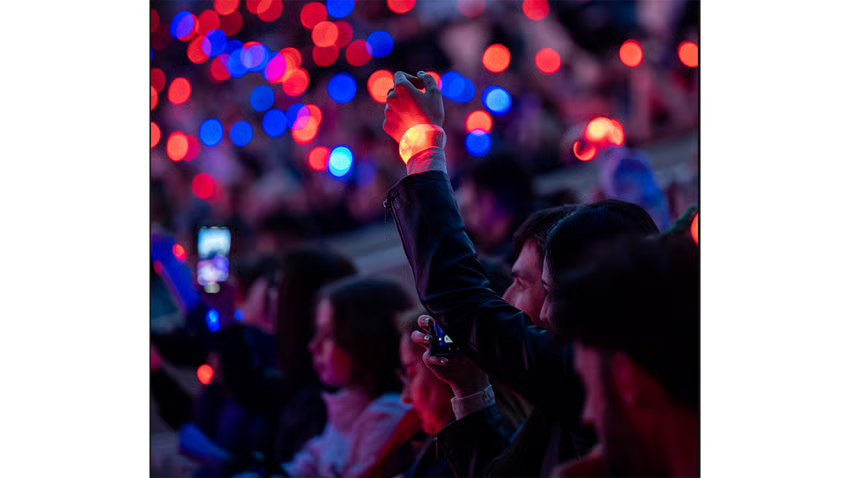Mötley Crüe’s limited-run residency landed at Dolby Live at Park MGM in Las Vegas from September 12 to October 3, 2025. Rather than open with full arena spectacle, the show began in a haze of incandescent glow: ACL bars, PAR Cans and floor strobes flickering behind Tommy Lee. For those first two songs, the band and audience time-traveled back to 1981, when Mötley Crüe were a gritty club act tearing up the Sunset Strip. Then came “Wild Side,” and the rig erupted, erasing the illusion in a flood of modern power and color.
“The idea was to make the audience think, ‘Wait, is this the whole show?’” says Lighting Designer Michael Cooper. “Two songs under a tiny, dirty-club rig, and then we blow the room wide open.”
The narrative of constraint giving way to chaos became the heartbeat of the production. And for programmer Christopher Smith, who joined Cooper after a quick call over the summer, it was a thrill to build a visual arc that matched the band’s ferocity.
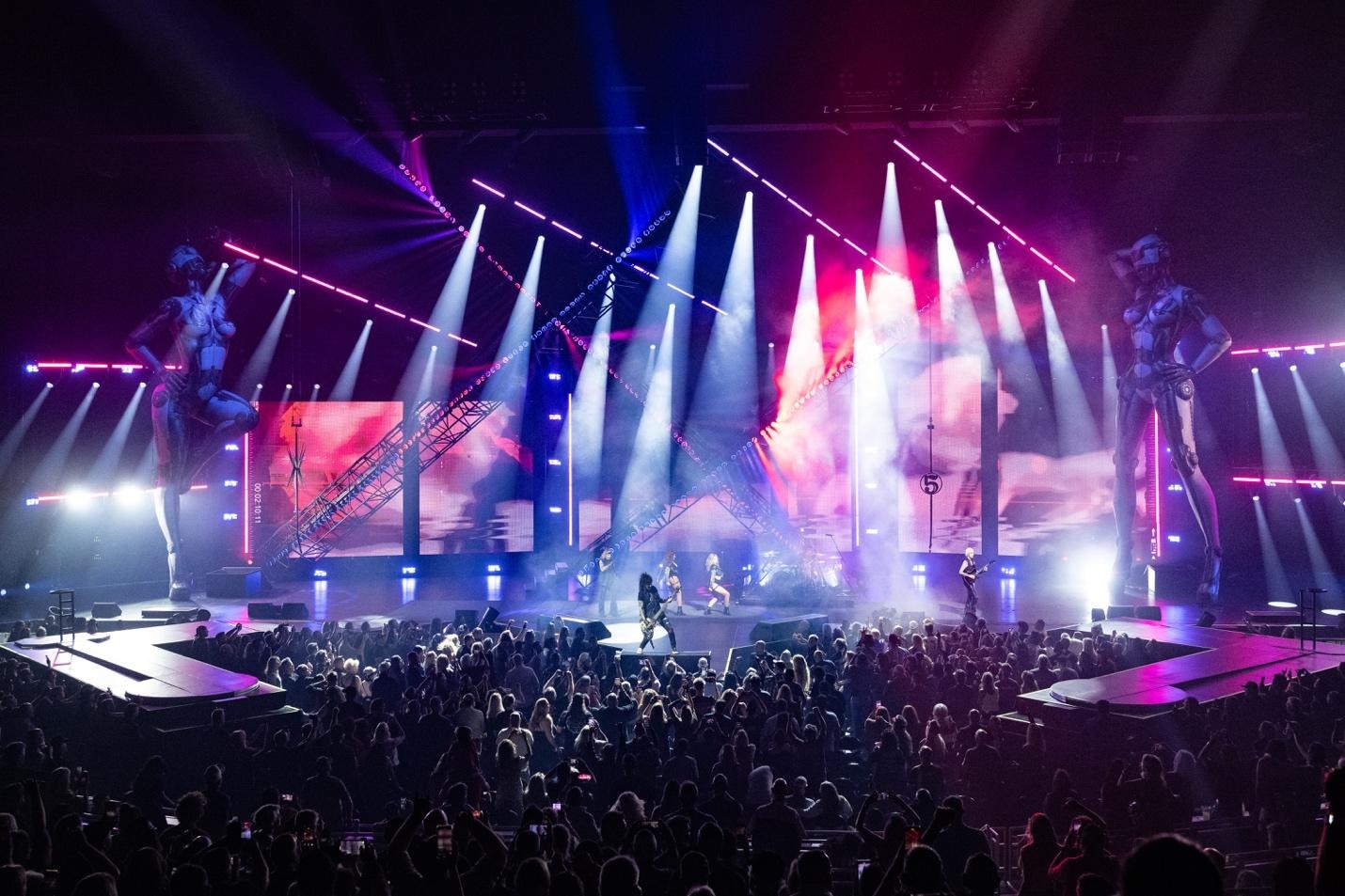
Building Big in a Small Window
The team had just five days of previs before moving into rehearsals, a tight schedule even for veterans. But Smith says the clarity of Cooper’s design made his programming feel natural and flow quickly.
“It was condensed, but we both knew I needed to come in with a really well-put-together show,” says Smith. “By the time we hit rehearsals, everything just worked. We didn’t have to rebuild much at all—just small tweaks. It was one of those rare times where you hit play and think, ‘Oh my God, that’s great.’”
In some ways, residencies require more polish than tours, since the environment remains constant and audiences expect perfection. “You can go deeper,” he says. “Every cue has to mean something.”
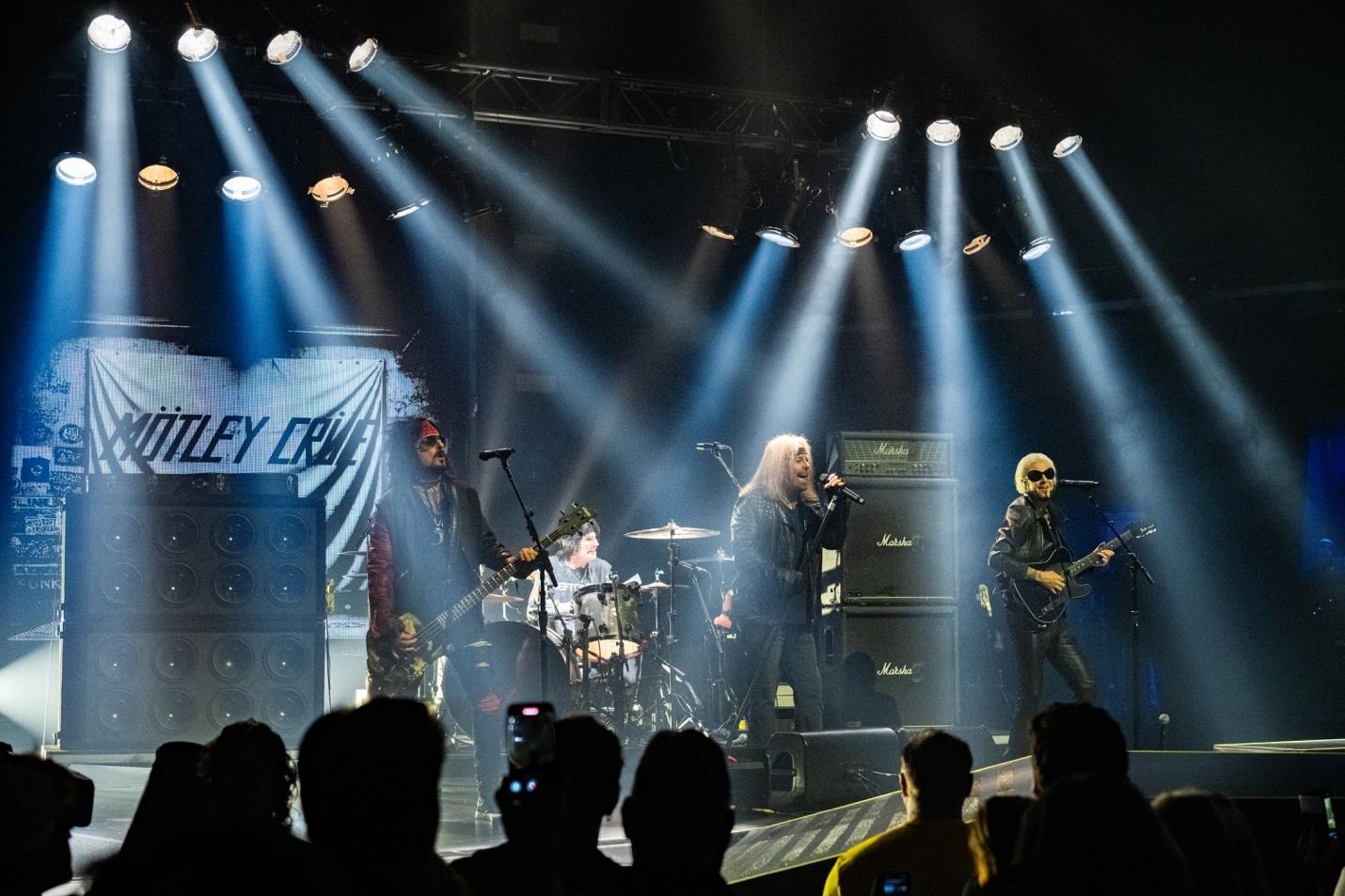
Programming the Past
Recreating the feel of an old-school incandescent rig meant thinking differently about timing and rhythm.
“With LEDs, you can snap things instantly,” says Smith. “But with incandescent PARs or Fresnels, you need to feel the fade. There’s decay—so your timing instincts need to shift. It becomes all about rhythm instead of color or pattern changes.”
Behind Tommy Lee, Cooper placed vintage-style strobes—updated with JDCs from lighting vendor PRG’s inventory. Smith treated them all like analog fixtures: “You get that same club energy, just with a little more punch.”
For those opening songs, the illusion worked so well that the crowd didn’t quite know how to react. “People pulled out their phones like, ‘Wait, what is this?’” Smith laughs. “By song two they were in it—and by the third song, we just blew the place apart.”

The Explosion: ‘Wild Side’ and Beyond
Once the full rig came online, the show expanded into a kinetic, widescreen experience—hundreds of cues spanning a mix of fixtures that Cooper and Smith pushed hard: Acme Tornadoes, PixelLines, Robe Fortes, Icons, a bank of Best Boy washes, and a Follow-Me system provided by Matt Mills for precise spot tracking throughout the set.
Visually, the design was anything but traditional.
“I didn’t want symmetry,” says Cooper. “Mötley Crüe has never been tidy. The rig needed to feel like it was about to fly apart—but in a way that still hits the mark musically.”
Cooper intentionally built asymmetry into nearly every layer of the design—offset trusses, uneven fixture groupings, and angled video pieces that broke the horizon line.
“Everything was a little off axis,” he explains. “Even when nothing’s moving, the stage feels like it’s in motion. That tension, that push and pull, is the band’s energy.”
The approach paid off once “Wild Side” hit, as light and structure seemed to explode in all directions at once.
“The Tornadoes really gave us that extra punch,” says Cooper. “They’re super bright, fast, and the pixel mapping lets us make them feel musical. Between those and the PixelLines, we could draw rhythm in midair—almost like watching a guitar solo in light.”
Cooper notes that the Fortes delivered the muscle behind the widescreen moments.
“They’re the horsepower of the rig,” he says. “You can rely on them for those big, arena-sized looks that just fill the room.”
The Follow-Me system, he adds, “was a huge help in a residency setting—tight room, repeating show. Matt dialed in the calibration perfectly, so our focus tracks stayed consistent night after night.”
Smith agrees.

“We built an entire song around the Best Boy washes, because they held up better than expected,” he says. “They’re older fixtures, but they did exactly what I needed. The Tornadoes were great for bending light into riffs—you could feel the guitar through them. When the tempo’s right, it’s like tracing the lead lines with light.”
For Cooper, that asymmetry and aggression gave the show its heartbeat.
“I wanted the rig to feel dangerous—like it might collapse under its own energy, but never does,” he says. “That’s the fun of lighting Mötley Crüe: it’s chaos that still lands on the beat.”
Together, those looks defined the show’s midsection—a run anchored by ‘Wild Side’ and ‘Shout at the Devil’, where everything hit at once: beam choreography, pixel chases and pure rock swagger.
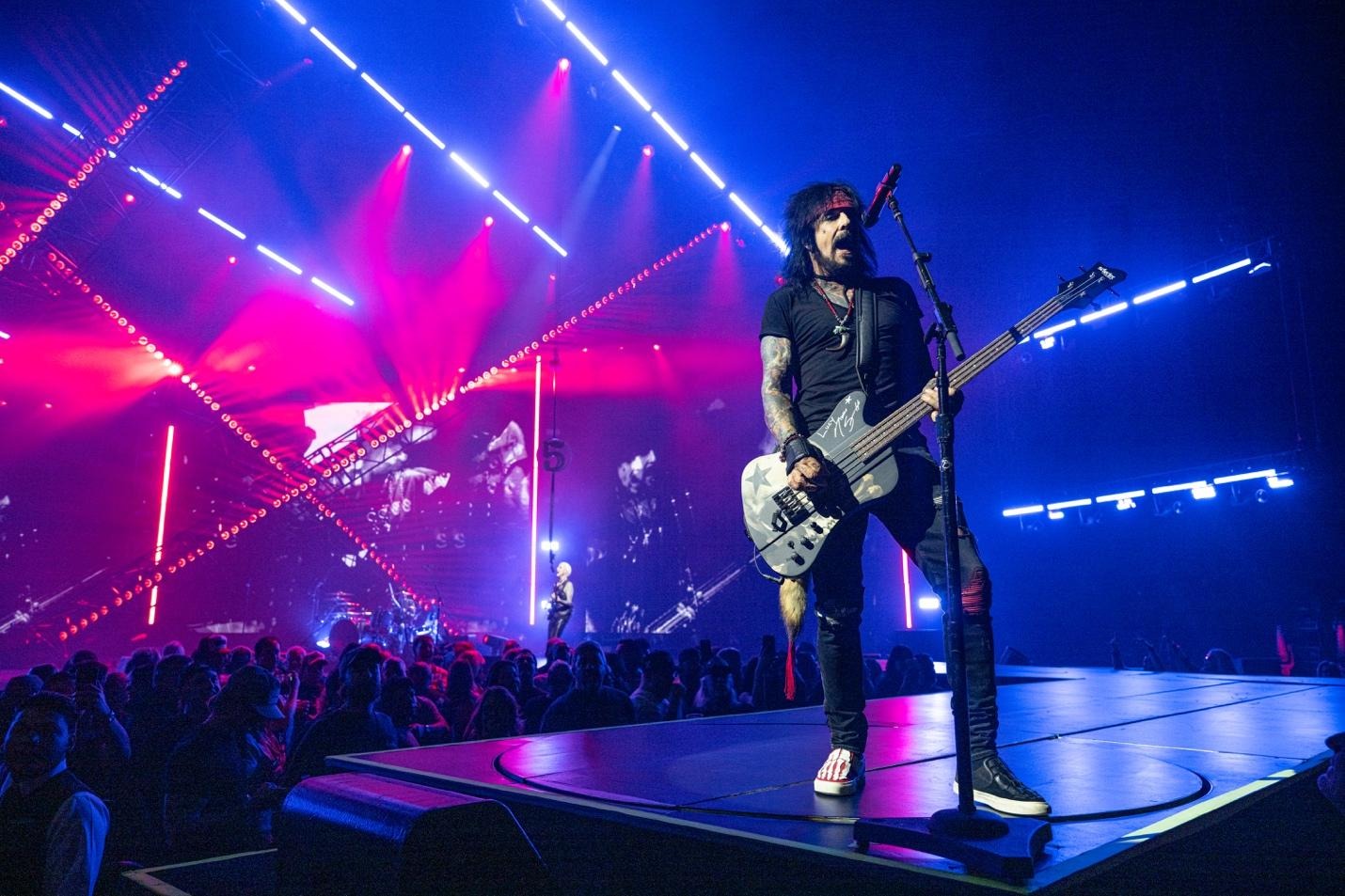
Crew Chemistry and Calm Execution
The show’s seamless feel began long before opening night. The production management and design for Mötley Crüe’s Park MGM residency was handled by Cooper and his colleagues Ashley Zapar and Robert Long via their company A to Z Live. Set design started over a year prior, evolving through multiple revisions as ideas moved from early sketches to the final stage.
“Robert, Ashley and I work tightly together on most of our designs,” says Cooper. “From the first napkin sketches to the video concepts, overall set designs, budget approvals, show cues—every detail gets touched by all three of us. It’s a real collaboration.”
That long runway built trust and alignment across the creative and production teams, setting the stage for a smooth execution once they hit rehearsals.
“The Crüe team has been together a long time,” says Smith. “They know what works, and it’s just a great environment to step into. Everyone’s on the same page, no ego, just getting it done.”
Cooper adds that the crew’s experience was essential for quick adaptation as last-minute changes came in from the band.
“We had moments where Nikki wanted a truss shifted or something adjusted for stage traffic, and Ashley’s team just made it happen,” Cooper says. “They were incredibly efficient. No drama—just solutions.”
That balance—long-term creative planning and calm, in-the-moment execution—became one of the production’s defining strengths.
That ease extended to vendor support as well. When Cooper and Smith requested extra strobes to fill out the ground row, PRG’s Las Vegas shop team made the change instantly. “It was literally, ‘Yep, you got it,’” Smith recalls. “No hesitation. That kind of responsiveness keeps your momentum going.”
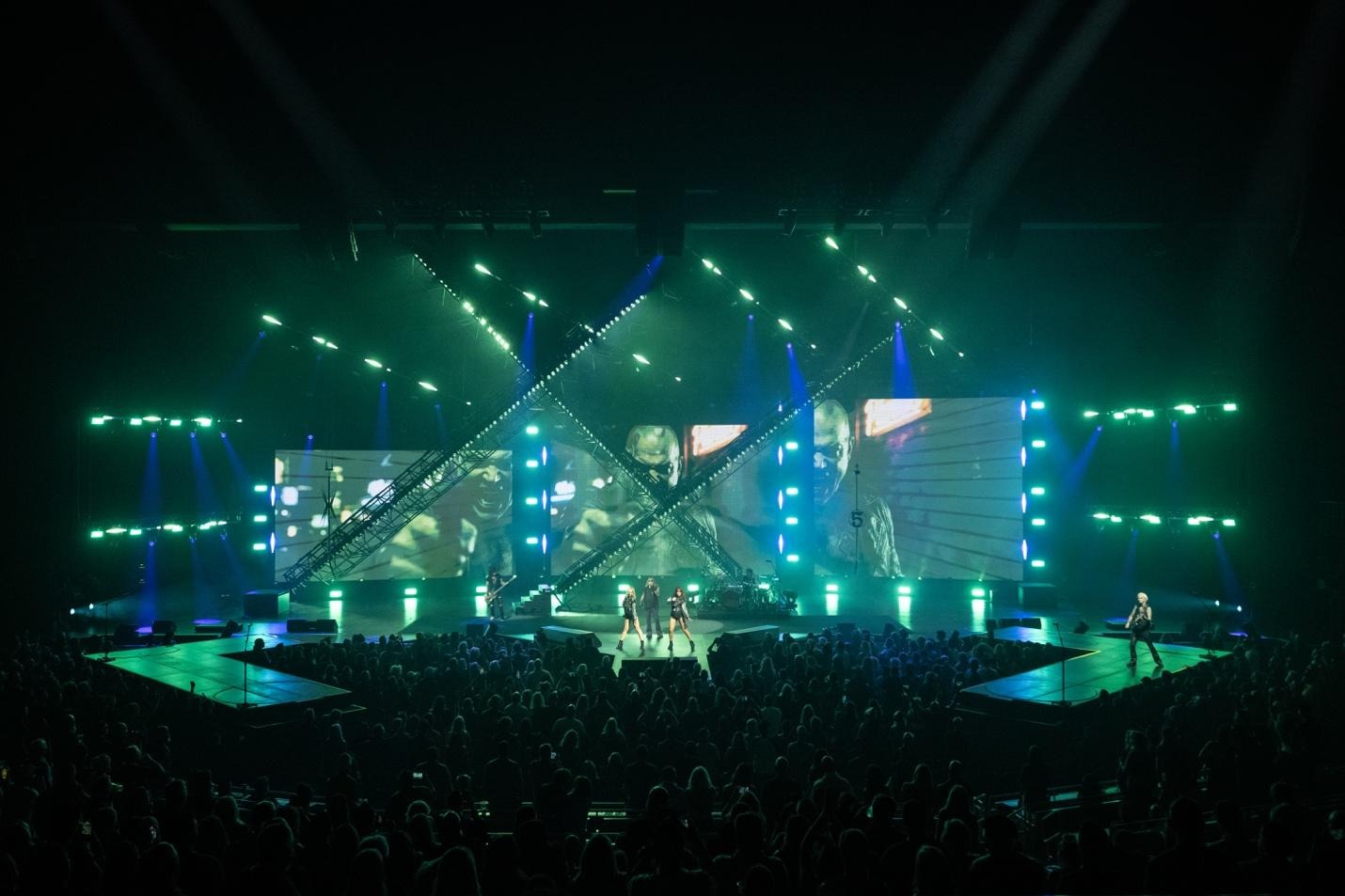
Lighting That Hits Like a Riff
What made the residency stand out isn’t just the scale of the rig but the way it followed the band’s pulse. Each cue seemed to move in sync with the kick drum or a guitar bend: light as choreography, not backdrop.
“For us, it was about rhythm,” says Smith. “You don’t just chase beats, you chase feel.”
By the end of the ten-show run, the team agreed on one thing: they wished it weren’t ending. “It’s one of my favorite projects in years,” says Smith. “Every night felt alive.”
And for Cooper, that moment when the lights finally erupt from that humble PAR rig into full-blown arena power says everything about what makes Motley Crüe timeless.
“It’s the tension before the ignition,” he says. “You think you’re seeing a bar band—and then you remember they’re one of the biggest rock acts in the world.”
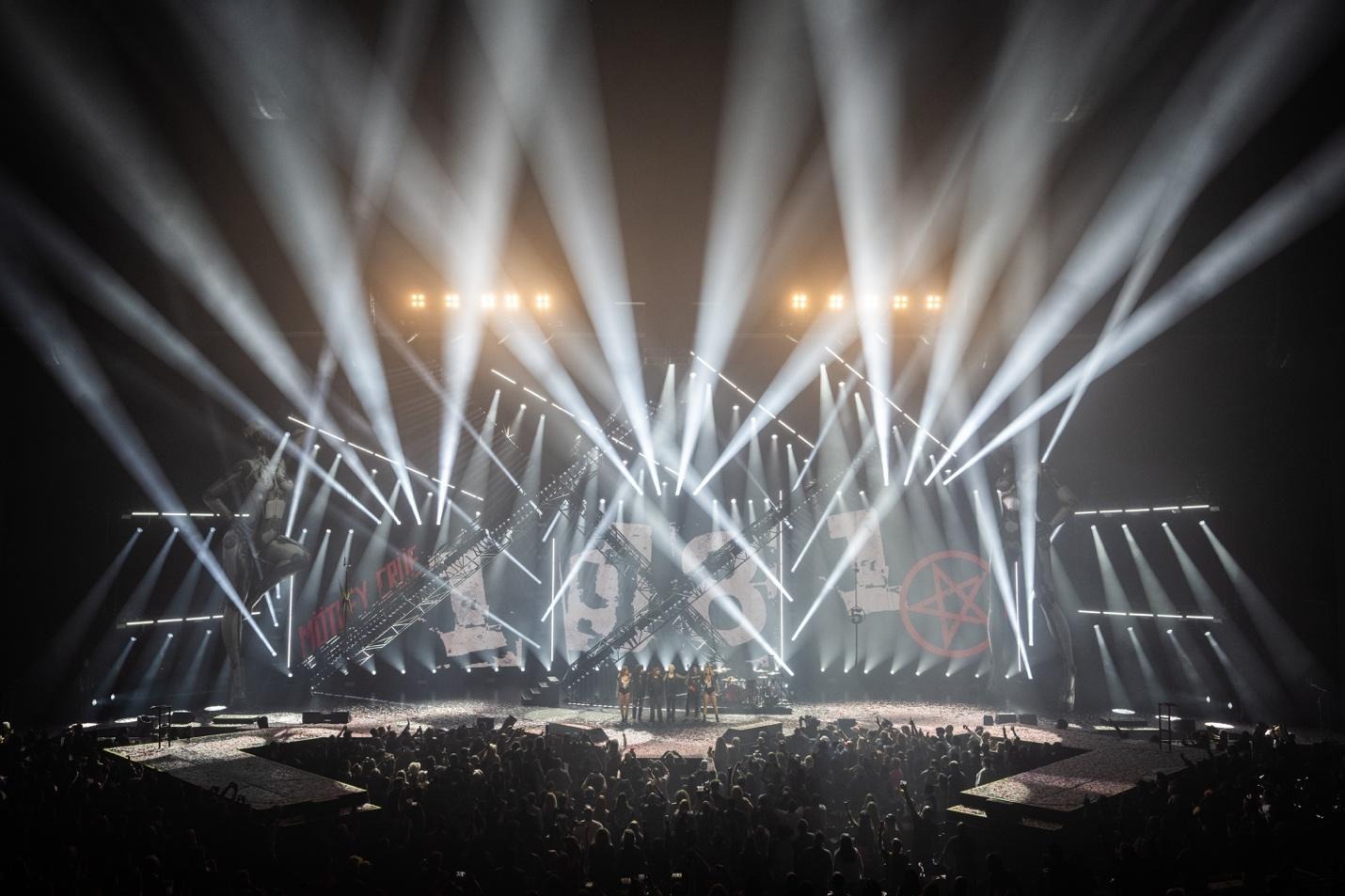
Credits
Production & Set Design: A to Z Live - Robert Long, Ashley Zapar, Michael Cooper
Lighting Design: newfangled lighting, inc. - Michael Cooper
Lighting Programming: The DDP Company - Christopher Smith
Lighting Vendor: PRG - John Wiseman
Follow Spots: Follow Me! - Matt Mills
Video Content Design: Robert Long, Ashley Zapar, Colby Geneau, Andy Reuter, Fred Caron, Michael Cooper
D3 Media Server Vendor and Programming: Riot Video - Colby Geneau
Automation/Staging: SGPS
Fog: FFP Effects
Design and Previsualization Software: WYSIWYG 2025
Lighting Control: MA Lighting grandMA3
Photos: Brian Friedman
Management: Rick Canny (Favor the Artist), Allen Kovac (10th Street Entertainment)
Lighting Gear List
grandMA3 Full Size - 2
Acme Tornado - 48
Acme Pixelline - 71
Robe Robin Forte - 62
Robe Robin Esprite - 31
PRG Best Boy Wash - 26
PRG Icon Edge - 33
GLP JDC 1 - 42
Chauvet Strike Array 4 - 10
Par 64 - 12 ACL Bar - 4
6” Fresnel - 6
2 Light Molefay - 2
Orka Fogger - 2
More News
Support USITT
For many 501(c)3 nonprofit organizations, USITT included, donations are a lifeline. We are able to continue to expand our online offerings to our Members and to our industry thanks to Membership dollars and the generosity of our donors.

